Best Snowshoe Hiking Trails
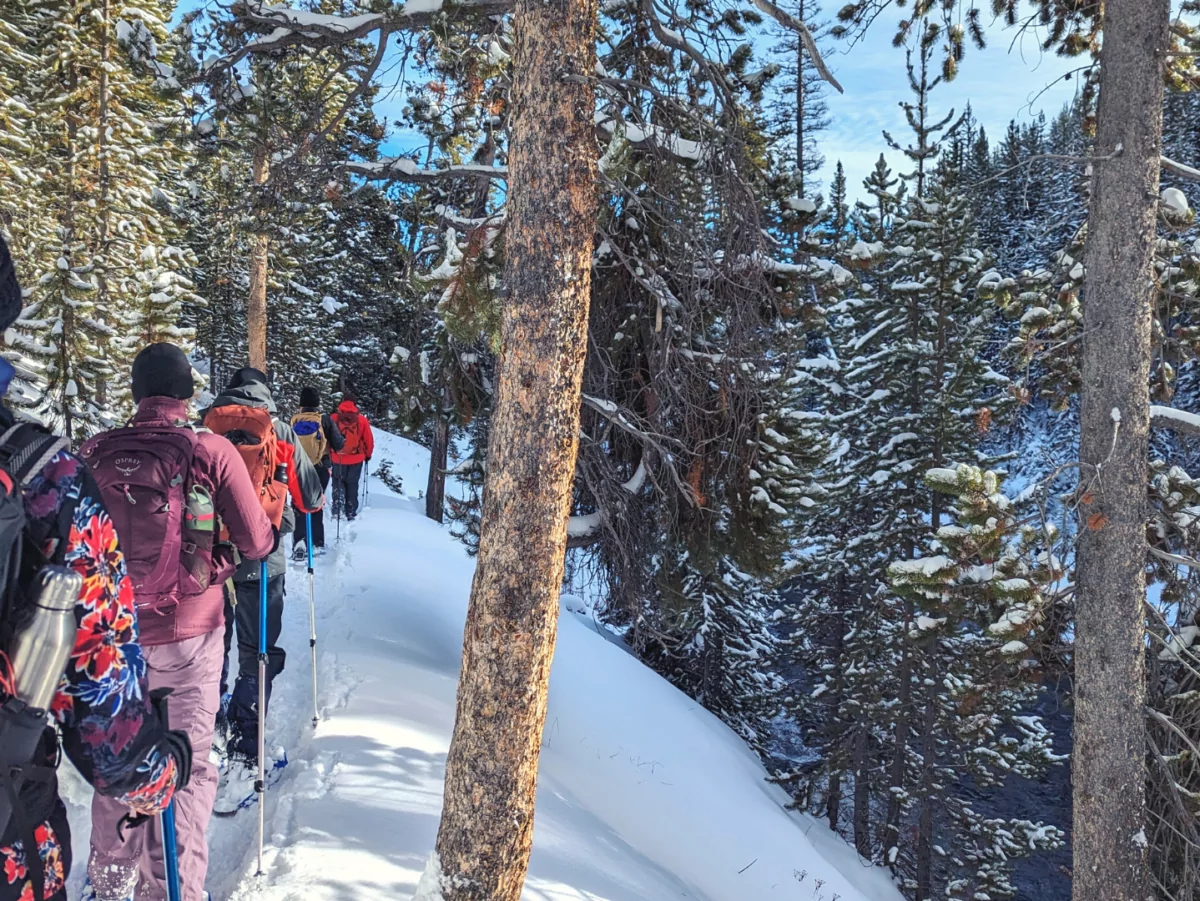
Winter transforms our outdoor spaces into natural snowy playgrounds for those who dare to be cold. Snowshoe hiking offers an ideal blend of exercise, tranquillity, and breath-taking scenery for those seeking a unique and refreshing way to explore popular places in off-peak season. We’ve curated a list of the best snowshoe hiking trails inviting you to discover the enchanting beauty of nature while navigating through some of the most captivating snowy terrains. Whether you’re a seasoned snowshoer or a novice looking to gain some knowledge, join us on a journey to cover trails that provide a workout and a memorable outdoor experience during winter charm. Lace-up your snowshoes and get ready for an exploration of landscapes around the states.
1. Mount Rainier, Washington
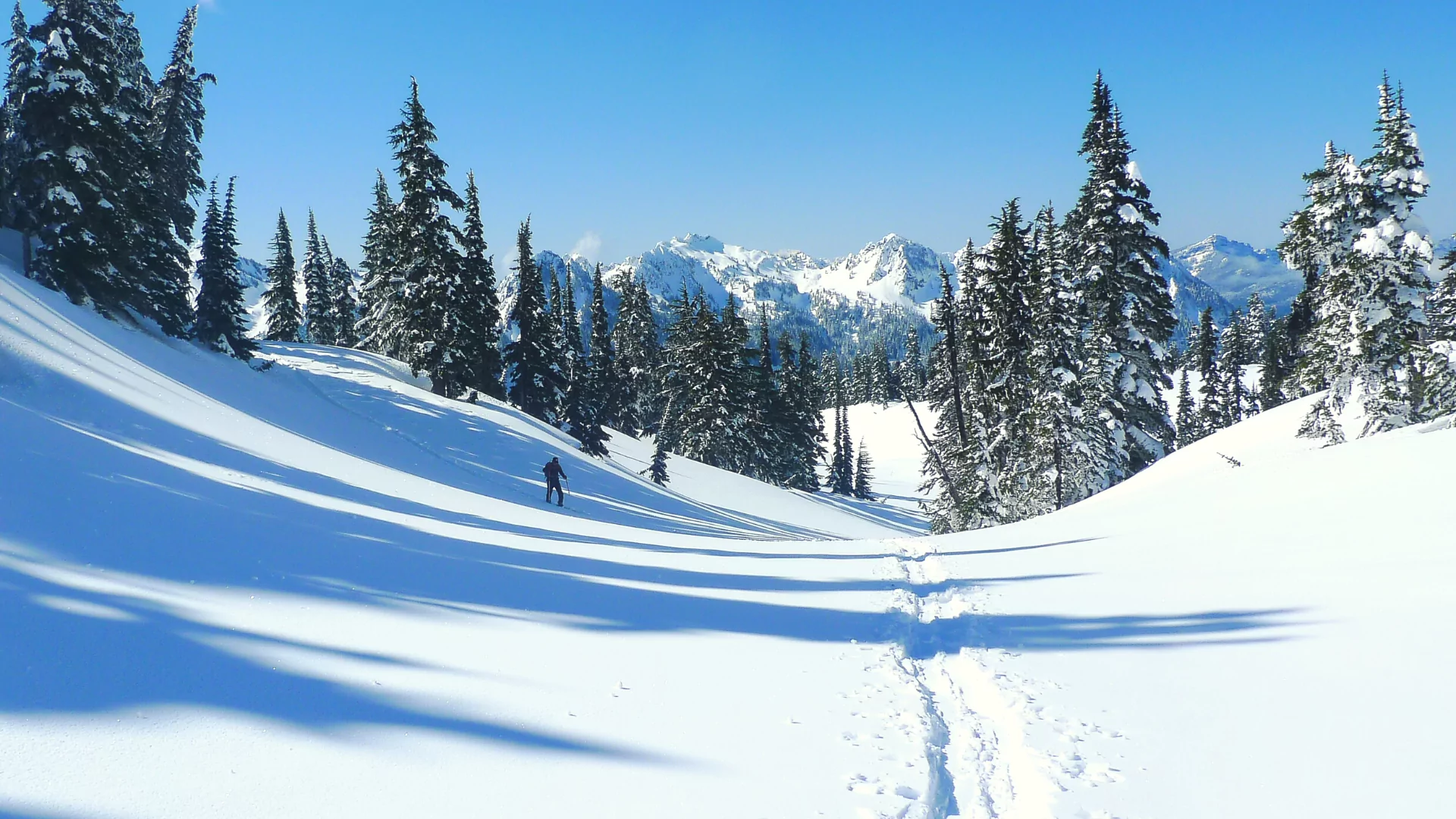 This massively popular National Park is thronged with visitors during the spring, summer, and fall, but come winter there is magic in the air. The crowds lessen and the dirt trails are covered in snow. Visitors can take in the spectacular views of the Cascade mountain range with the solitude that winter snowshoeing provides.
This massively popular National Park is thronged with visitors during the spring, summer, and fall, but come winter there is magic in the air. The crowds lessen and the dirt trails are covered in snow. Visitors can take in the spectacular views of the Cascade mountain range with the solitude that winter snowshoeing provides.
Our trail recommendations:
Mazama Ridge
- A 6-mile round trip out and back experience, gaining 900 feet of total elevation, and a difficulty rating of moderate. This trail is popular among snowshoers at Rainier because it avoids avalanche terrain, a common winter danger at high elevations. It’s outside of the ever-popular Paradise area, retaining its winter tranquillity and charm.
Panorama Point aka Skyline Loop Trail
- This 6-mile round trip loop gets snowshoers 1,900 feet closer to the sky and is rated as hard. Widely considered the most popular trail in the park, this includes winter, and for a solid reason. From the summit snowshoers can soak up views of the Goat Rocks, Mount Adams, Mount Hood, Castle Peak, Pinnacle Peak, Plummer Peak, Mount Saint Helens, and the Tatoosh Range. This trail includes avalanche terrain, so talk with a ranger when planning your trip and about conditions day-of, to ensure your safety.
Pro tip: Choose a sunny day without clouds or snow to help with route finding and increased visibility of the dreamy mountain ranges.
Aren’t sure if you want to navigate avalanche terrain alone? Snowshoe with an experienced guide and explore the Mount Rainier area with Wildland Trekking!
2. Rocky Mountains, Colorado
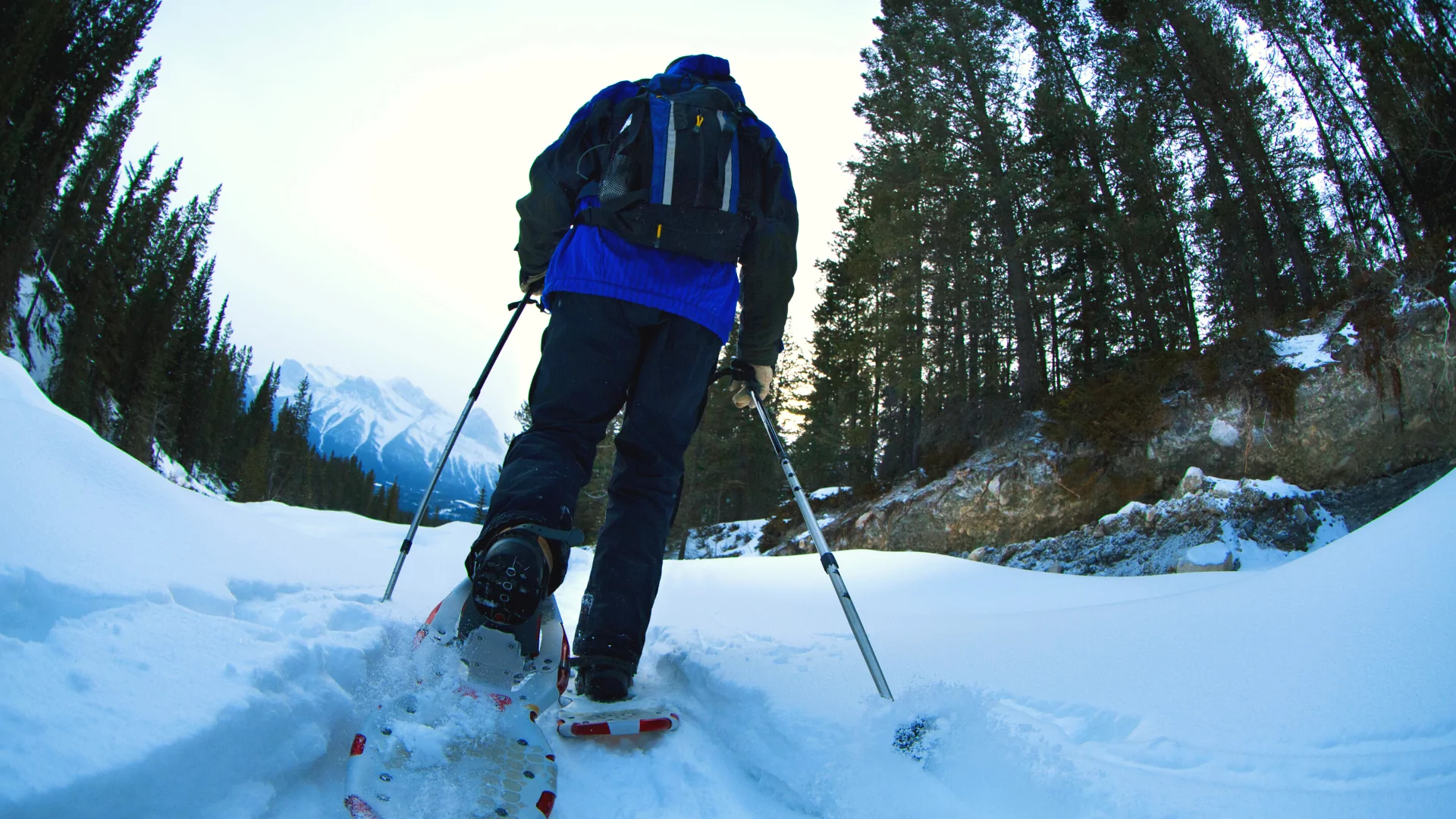 With consistent snowpack throughout winter, Rocky Mountain National Park provides snowshoers with seemingly endless adventures. Winter visitors get the opportunity to explore the park with significantly fewer crowds and a deep sense of serenity. This area offers a wide swath of difficulty levels and terrain accommodating all abilities.
With consistent snowpack throughout winter, Rocky Mountain National Park provides snowshoers with seemingly endless adventures. Winter visitors get the opportunity to explore the park with significantly fewer crowds and a deep sense of serenity. This area offers a wide swath of difficulty levels and terrain accommodating all abilities.
Our trail recommendations:
The Loche Vale Trail
- The Loch Vale Trail is a 5.7 mile out and back, gaining 1,062 feet, and is considered moderate. At the start of the trail, snowshoers hike next to the frozen Alberta Falls, a gorgeous 30-foot frozen waterfall. Hike onwards through a dramatic gorge lined by steep walls of colorful rock. Push on for views of the Eastern Glacier Knobs, Taylor Glacier, and several other peaks of the Rockies. The terminus and turnaround is a pristine, sparkling alpine lake.
Pro Tip: Arrive early as parking at the trailhead fills up fast!
Crags Crest Trail, Grand Junction
- Located just outside of Grand Junction, west along I-70 of Rocky Mountain National Park, Crags Crest Trail gets visitors to the top of the largest flattop mountain in the world. This arduous trail is a 10.3-mile loop, with a 6-mile uphill battle through native aspens and birch trees. Get an early start to avoid afternoon thunderstorms ruining your snowshoe adventure.
Prefer someone else do the planning? Wildland offers one of the best snowshoe hiking tours in the Rocky Mountains.
3. Yellowstone National Park, Idaho, Montana, Wyoming
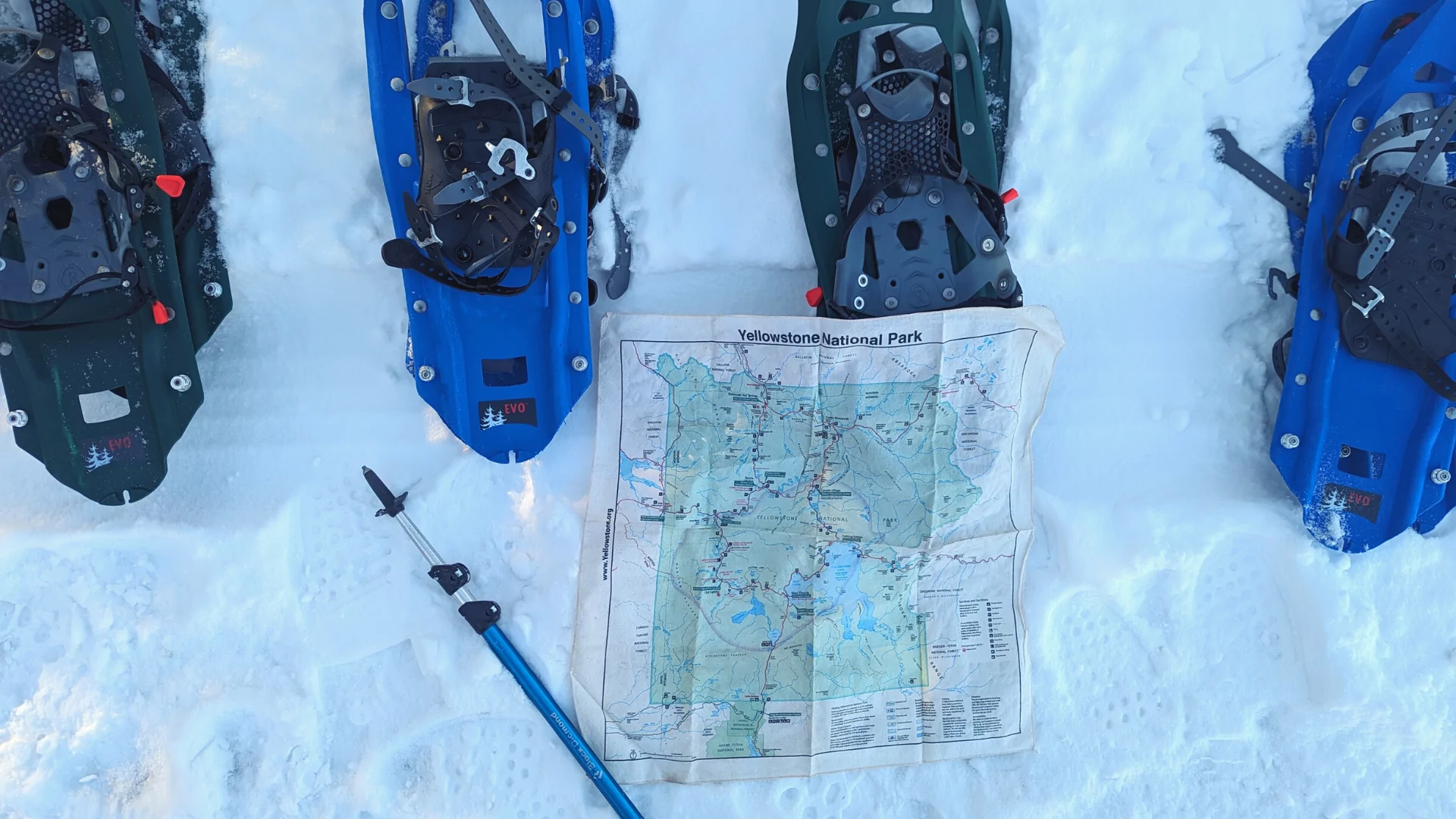 Private vehicle access to Yellowstone National Park is extremely limited in the winter, and snowshoeing can offer the best way to experience the highlights. Yellowstone is one of America’s most visited parks, and touring it during winter is a treat, with notably fewer crowds offering a peaceful outdoor experience.
Private vehicle access to Yellowstone National Park is extremely limited in the winter, and snowshoeing can offer the best way to experience the highlights. Yellowstone is one of America’s most visited parks, and touring it during winter is a treat, with notably fewer crowds offering a peaceful outdoor experience.
Our trail recommendations:
Observation Point Loop Snowshoe Trail
- This breezy two-mile loop is the park’s most popular snowshoe trail as it leads visitors to a view of the famous Old Faithful Geyser. Imagine the geyser erupting as a gentle snow falls, a unique experience indeed. Along the route snowshoers will catch views of Upper Geyser Basin, Firehole River, and Solitary Geyser.
Chittenden Loop Trail
- This difficult 5.3-mile loop climbs adventurers through dense lodgepole pine to gain views of Mount Washburn on clear days. Wildlife enthusiasts will love the frequent spotting of bison and elk, stay alert!
Pro tip: Stay at the historic and recently renovated Mammoth Hot Springs Hotel and Cabins for an accessible jumping off point on the edge of the park, or book a seat on a snowcoach headed into the heart of Yellowstone to reach the Old Faithful Snow Lodge.
Too many moving pieces? We offer an all inclusive multiday snowshoe excursion through Yellowstone let by a local expert guide.
4. Alaska
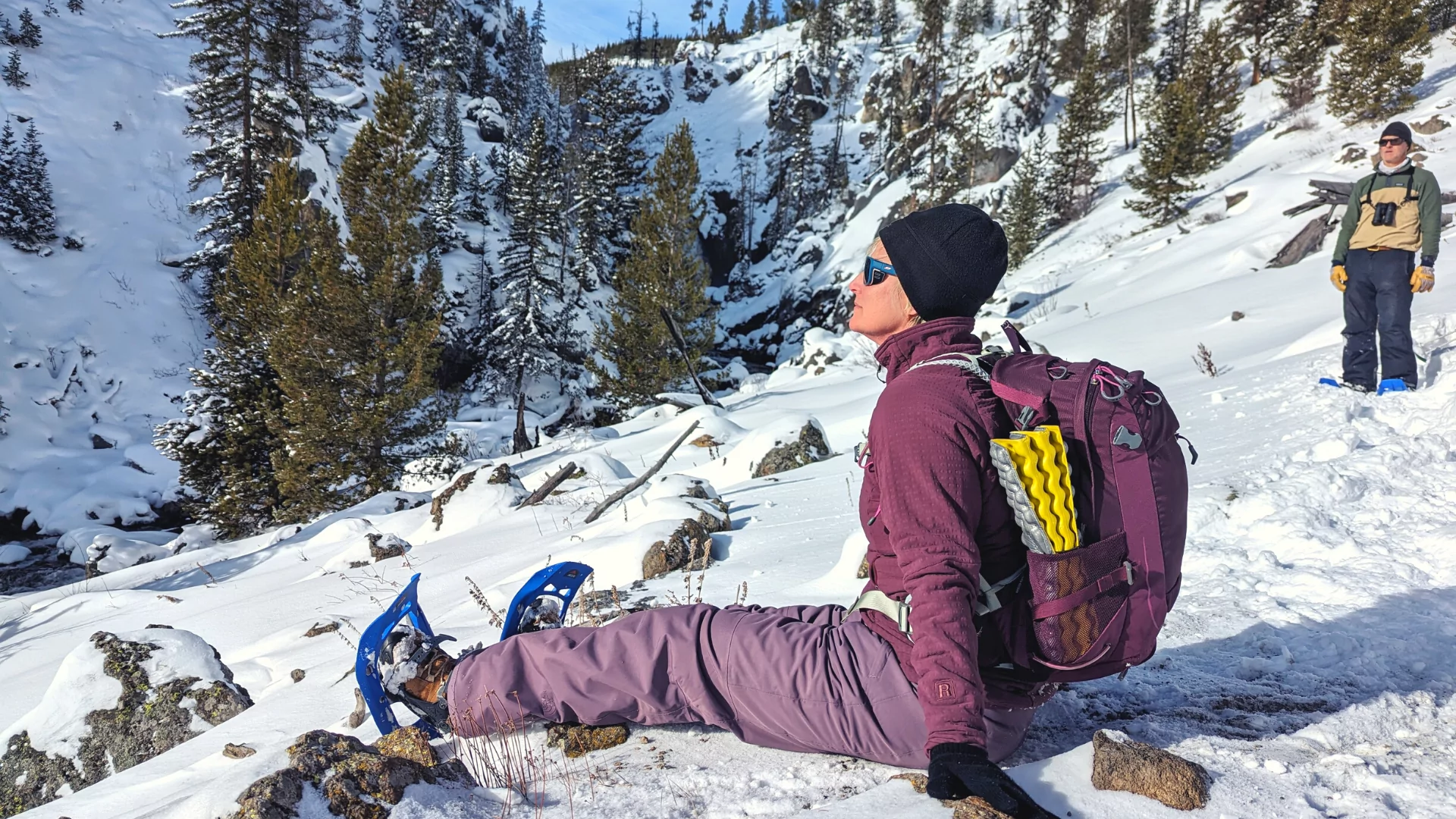 A list of the best snowshoe hiking trails would be incomplete without the addition of Alaska. Visiting during the winter offers travellers the opportunity to see a more authentic Alaska. The low-angle sunlight provides Golden Hour hues most of the day and the landscape has a magical soft touch. This, coupled with Alaska’s incredible remoteness, brings a deep sense of tranquillity and peace. Visitors have opportunities to see The Northern Lights and starscapes sure to dazzle the eyes.
A list of the best snowshoe hiking trails would be incomplete without the addition of Alaska. Visiting during the winter offers travellers the opportunity to see a more authentic Alaska. The low-angle sunlight provides Golden Hour hues most of the day and the landscape has a magical soft touch. This, coupled with Alaska’s incredible remoteness, brings a deep sense of tranquillity and peace. Visitors have opportunities to see The Northern Lights and starscapes sure to dazzle the eyes.
Our trail recommendations:
Tony Knowles Coastal Trail, Anchorage
- During the summer months this trail serves as a paved bike path, but come winter it is transformed into a snowshoeing delight. Clocking in at 19.7 miles, with 1,187 feet of elevation gain, this easy out-and-back trail is not to be missed. Snowshoers receive glorious scenic views of Anchorage, Cook Inlet, Knik Arm, Earthquake Park, and the surrounding mountain ranges. Birdwatching and wildlife spotting are made easy and birch trees and evergreen line the coastal trail. It terminates at Kincaid Park, a 1,400-acre park with a chalet housing a Nordic ski center for even more outdoor adventure. If endurance is your calling, then this trail is sure to light you up (otherwise choose your distance turn around).
Mount Healy Trail, Denali National Park
- If you’re looking for a challenging snowshoeing outing this is for you. The Healy Trail is a difficult 6-mile out and back, gaining 1,700 feet of elevation to the summit. It is one of the steepest trails in the park, and it provides generous 360-degree views of the front country of the park and on clear days, Mount Denali. Snowshoers gently rise through a spruce forest before entering the intense switchbacks leading above the treeline. Be prepared for high winds! Note that the trail doesn’t end at the true summit (top) but 1.5 miles below. If you choose to forge ahead understand the extreme dangers and know your limits as many visitors have sustained serious injury.
If Alaska feels too wild and remote to plan alone, consider our snowshoeing and northern lights excursion. We will stay in historic lodges, and explore the true Alaska during winter.
From the crisp crunch of snow beneath your snowshoes to the awe-inspiring vistas that unfold with each step, these trails present a unique perspective from which to experience popular parks in off peak season. Whether you seek a challenging ascent to a snow-capped summit or a stroll to notable park landmarks, the best snowshoe hiking trails have something to offer every winter wonderland adventurer.




